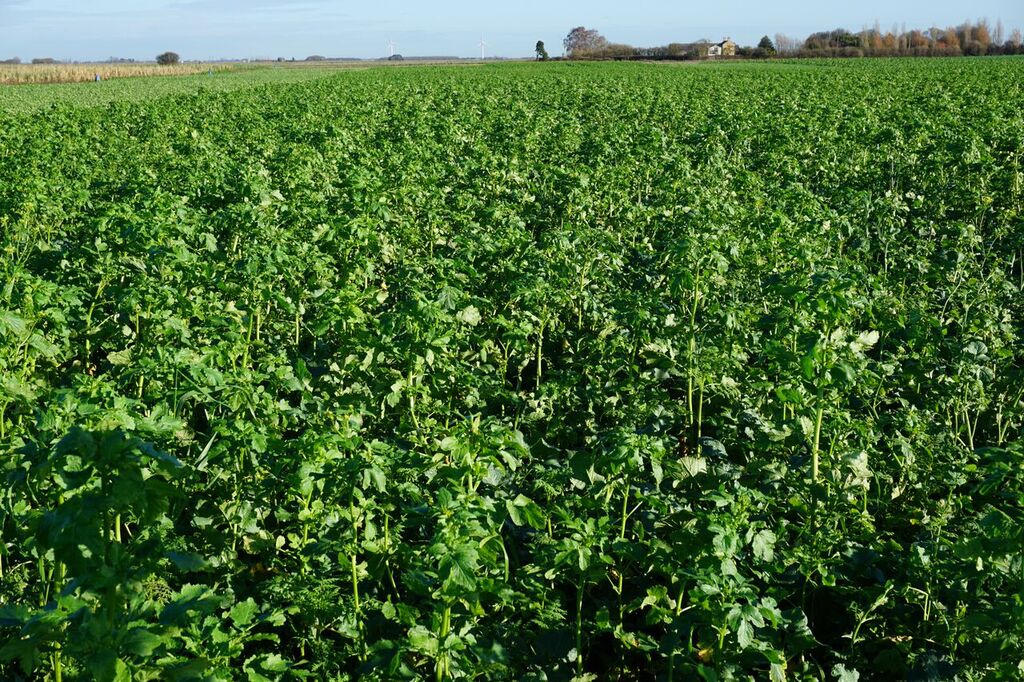Make the right call with cover crop kill
8th December 2017
Effective cover crop destruction will be more important than ever ahead of spring crops this season to avoid compromising establishment and performance, insist industry advisers.

The best and safest strategy is to spray-off cover crops in late January or early February, growers are advised.
Effective cover crop destruction will be more important than ever ahead of spring crops this season to avoid compromising establishment and performance, insist industry advisers.
Plenty of moisture at sowing and another open autumn means most cover crops are well-established with substantial canopies. As a result, they will need careful spraying-off wherever there is insufficient frosting; especially where they contain harder-to-kill species like vetches, oil radish and lucerne.
Key considerations in this respect include the best-timed spraying, matching treatment to species and the most appropriate spraying practice.
“Don’t leave cover crop destruction too late,” warned Agrii trials manager, Steve Corbett. “Drilling ‘on-the-green’ may be fine with catch crops in November, but three years of work with a variety of mixes at our Stow Longa Black-grass Technology Centre convinces us covers are best sprayed-off four to six weeks before spring drilling.

Steve Corbett.
“We can’t rely on the winter to do the job for us these days. At the same time, if the covers aren’t well-destroyed before spring planting we invariably see the sort of delayed and uneven crop establishment we always want to avoid.
“Bear in mind that even the best glyphosate formulations take more time than usual to work under colder late winter and early spring conditions,” he added. “They need to be applied ahead of any hint of stem extension for the greatest efficacy too.
“Cover crops will have done their job by February. So there’s no advantage in leaving them growing. In fact, heavy soils are likely to condition better for spring seedbeds if they have a good two weeks without a cover. Not having one also gives you the best opportunity to deal with any early weed growth with pre-planting or pre-em glyphosate.
“So the best and safest strategy is to spray-off your covers in late January or early February.
That way you’ve cleared the decks for the most rapid and cleanest spring crop establishment.”
Hard to destroy
Regardless of how well they’re established, Roundup technical specialist, Barrie Hunt warns that some cover crop species are much harder to destroy than others.
Providing spraying is not left until stem extension is underway, he doesn’t see the cereal components of cover crop mixes presenting much of a challenge. Phacelia is also relatively easy to destroy in his experience.
“Our extensive trial work shows mustard, lucerne and oil radish can be more problematic, though,” he pointed out. “And vetches are particularly difficult, really putting the pressure on glyphosate at a time of the year when low temperatures restrict herbicide uptake and translocation,” he explained.
“Because you won’t get a second chance, you need to be right first time with your cover crop spraying. As well as employing a rate of glyphosate suitable for the hardest-to-kill species in your mix, you need formulations that work most effectively in challenging conditions.
To deal with any grass and broad-leaved weeds emerging following cover crop removal, Mr Hunt advises a further glyphosate treatment ahead of spring crop drilling or an approved formulation in the pre-em. To minimise the risk of resistance development, though, he stresses that where any under-storey of weeds survives cover crop destruction the ground should always be cultivated before a follow-up spray.
For the most effective penetration and coverage of tall, thick multi-species cover crop canopies, spraying specialist and Agrii regional technical adviser, David Felce urges everyone to spray with as much care and attention as they would in-crop.
“A mix of species and development means there are several layers within most cover crop canopies,” he explained. “What’s more, there can be a good amount of black-grass growth below them. “So it’s important to get sufficient canopy penetration as well as both canopy and individual leaf coverage.

David Felce.
“Glyphosate may be translocated, but in more challenging late-January/early-February conditions, in particular, the best coverage of all the target surfaces will pay dividends.
“Overall, I’d go for a spray quality on the coarser side of medium, either with flat fan nozzles at less than 2.5 bar or pressure-responsive air induction nozzles at around 4.0 bar,” he recommended. “Increasing water volumes from 100–150-litres/ha will give better coverage of larger, thicker canopies; and angling the nozzles alternately straight down and 30o forward will improve penetration.”
“Set the boom about 50cm above the canopy and take enough time to do the best possible job. I always find spraying at 10kph gives the best penetration. It also really improves boom stability. This may seem slow but it’s well worth holding back on the throttle to get the quality of kill you need. After all, you won’t be able to come back.”
